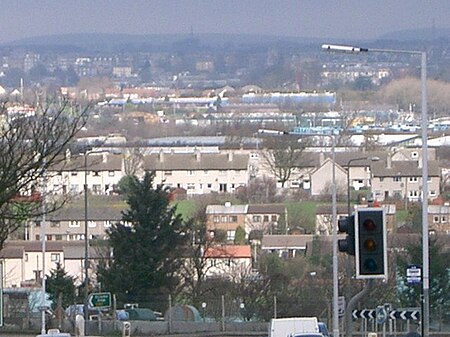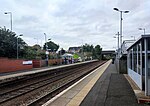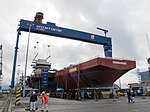Rosyth
Pages including recorded pronunciationsPort cities and towns in ScotlandPort cities and towns of the North SeaPorts and harbours of ScotlandRosyth ... and 2 more
Towns in FifeUse British English from June 2015

Rosyth (Scottish Gaelic: Ros Fhìobh, "headland of Fife") is a town on the Firth of Forth, three miles (five kilometres) south of the centre of Dunfermline. According to the census of 2011, the town has a population of 13,440.The new town was founded as a Garden city-style suburb and naval dockyards in 1909, and was built as the coastal port of Dunfermline. Rosyth is almost contiguous with neighbouring Inverkeithing, separated only by the M90 motorway. Rosyth railway station is on the Fife Circle Line.
Excerpt from the Wikipedia article Rosyth (License: CC BY-SA 3.0, Authors, Images).Rosyth
Peasehill Road,
Geographical coordinates (GPS) Address Nearby Places Show on map
Geographical coordinates (GPS)
| Latitude | Longitude |
|---|---|
| N 56.03388 ° | E -3.43226 ° |
Address
Peasehill Road
Peasehill Road
KY11 2DT , Camdean
Scotland, United Kingdom
Open on Google Maps









